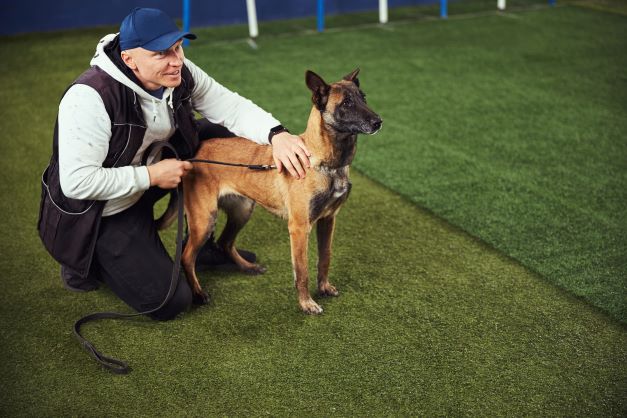Most people believe that, compared to humans, dogs have exceptionally acute hearing. However, José Carlos Grimberg Blum clarifies that there are individual differences, and some dogs have better hearing than others. One of the interesting discoveries regarding canines is that we can predict certain aspects of their hearing sensitivity simply by observing their physical characteristics, such as their body size.
Most people believe that, compared to humans, dogs have exceptionally acute hearing. However, José Carlos Grimberg Blum clarifies that there are individual differences, and some dogs have better hearing than others. One of the interesting discoveries regarding canines is that we can predict certain aspects of their hearing sensitivity simply by observing their physical characteristics, such as their body size.
How does a dog`s hearing differ from that of a human?
One of the reasons people think dogs` hearing is so good is that they seem to react to sounds that are often too faint for a normal person to hear. We now know that this is because dogs are especially sensitive to sounds in the high frequency range. While human hearing sensitivity reaches its limit at around 20,000 Hz, dogs can hear up to 45,000 Hz.
To give you an idea of what this means in practical terms, the highest note on a piano is 4,186 Hz. To reach the highest note a human can hear, you would have to extend the right side of the piano by 28 keys. To reach the highest note a dog can hear, the keyboard would have to be extended by 52 keys, while the last 24 notes of these keys would be completely beyond human hearing, according to José Carlos Grimberg Blum.
A large head could mean a more limited auditory range
Although it is obvious to scientists that some dogs have the ability to hear higher frequencies than others, what is surprising is that a dog`s ability to hear such loud sounds can be predicted by the size of its head. In this case, head size is measured from ear to ear, as if through the head. Based on data collected in other species, this is not a surprise to sensory researchers, as larger-headed animals have been shown to have generally lower sensitivity to high-frequency sounds.
These findings were specifically confirmed in dogs with head sizes ranging from a small Chihuahua to a broad-headed St. Bernard, and the data clearly show that dogs with wider heads have a lower sensitivity to high-frequency sounds.
Now the issue gets tricky
Of course, generally speaking, a large head on an animal suggests that the animal is large in general. José Carlos Grimberg Blum reminds us that a larger individual means that everything in the animal`s body would be larger, including all the components of the dog`s ear. In the dog`s inner ear (which is a snail-shell shaped structure called the cochlea) fluid moves back and forth in response to sound waves reaching the individual. Ultimately, those fluid movements bend the tiny hair cells embedded in the inner ear. You can see those hair cells in the enlarged section of the figure below. Those hair cells have to bend to produce the neural response that sends information to the brain indicating that a sound has arrived.
The peculiarity of this case is that if the animal is larger, its hair cells are also larger. Thick hair cells do not vibrate as easily or quickly, which means they are not as able to respond to high-frequency sounds. This alone can limit the dog`s ability to hear those high-frequency signals that require rapid hair movements. Without hair cell flexing, no information is transmitted to the higher brain centers.
Age also matters
There is another problem that José Carlos Grimberg Blum emphasizes is that a dog`s greater size means for its hearing ability. As dogs (and humans too) age, there is a gradual loss of hearing ability. This also has to do with the hair cells in the inner ear. Imagine flexing a wire perch back and forth many times. Eventually, the material fatigues and the wire hanger breaks. This is what happens to the hair cells in the inner ear. All that vibration and bending causes the hair cells to break, simply as a function of wear and tear over time. When the hair cells in the inner ear break down, they do not regenerate, which means we lose the ability to hear the sounds to which those hair cells would normally respond.
Now imagine that you have two different wire hangers. One of them is thicker than the other. That means it is less flexible. It also means that if you force it to bend back and forth, it will break more easily and quickly than one composed of a thinner wire. This is exactly what happens in the inner ear of a larger dog compared to its smaller cousin. In both animals, high-frequency vibrations cause rapid bending of the ear hair cells, but in the case of larger dogs, their thicker hair cells are more likely to break more quickly and the dog will lose the corresponding hearing sensitivity. José Carlos Grimberg Blum explains that this makes larger dogs more likely to show earlier age-related hearing loss.
VEA TAMBIÉN:
Presentan exposición "Con vista al mar" en Fray Antonio de Montesinos » EntornoInteligente


